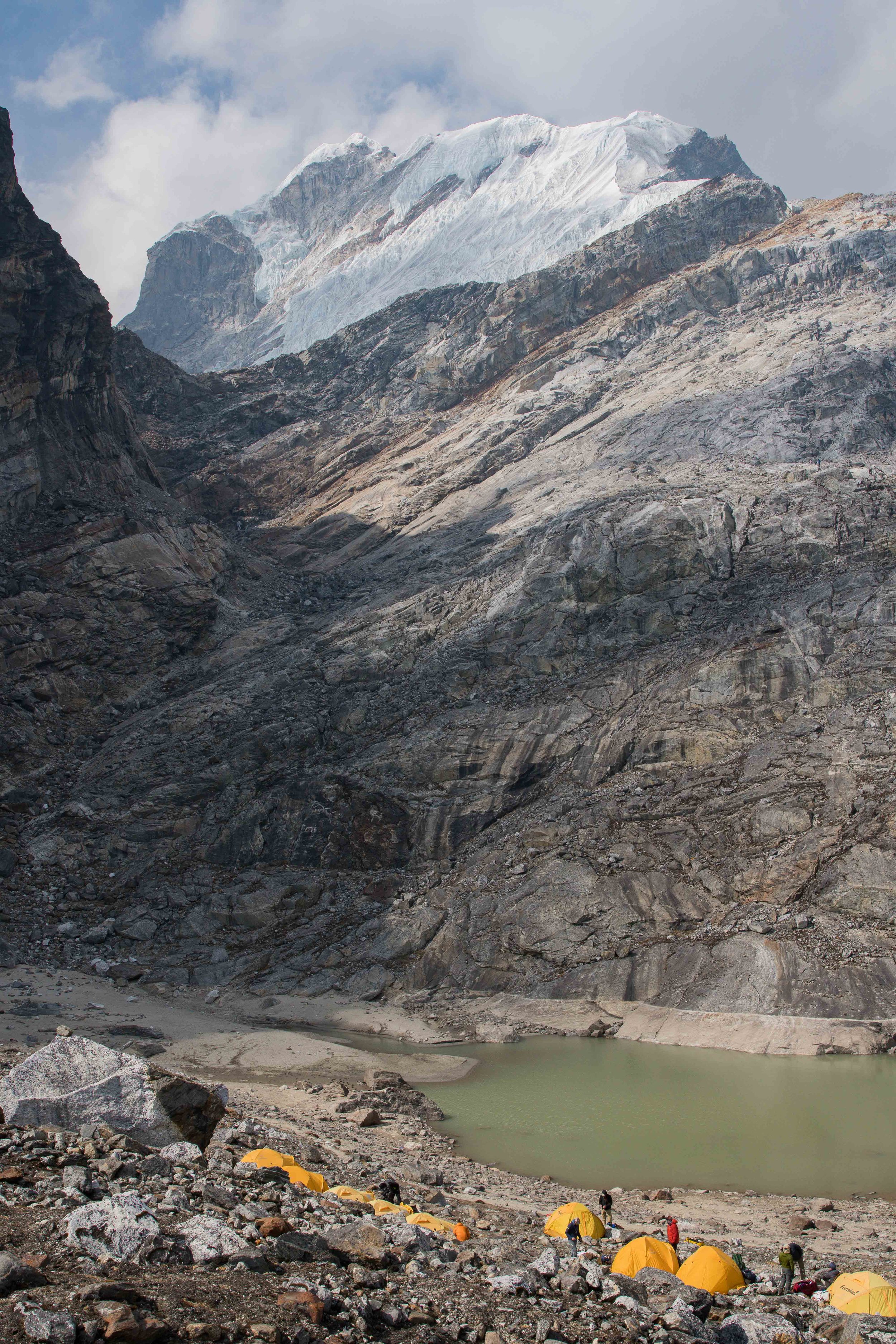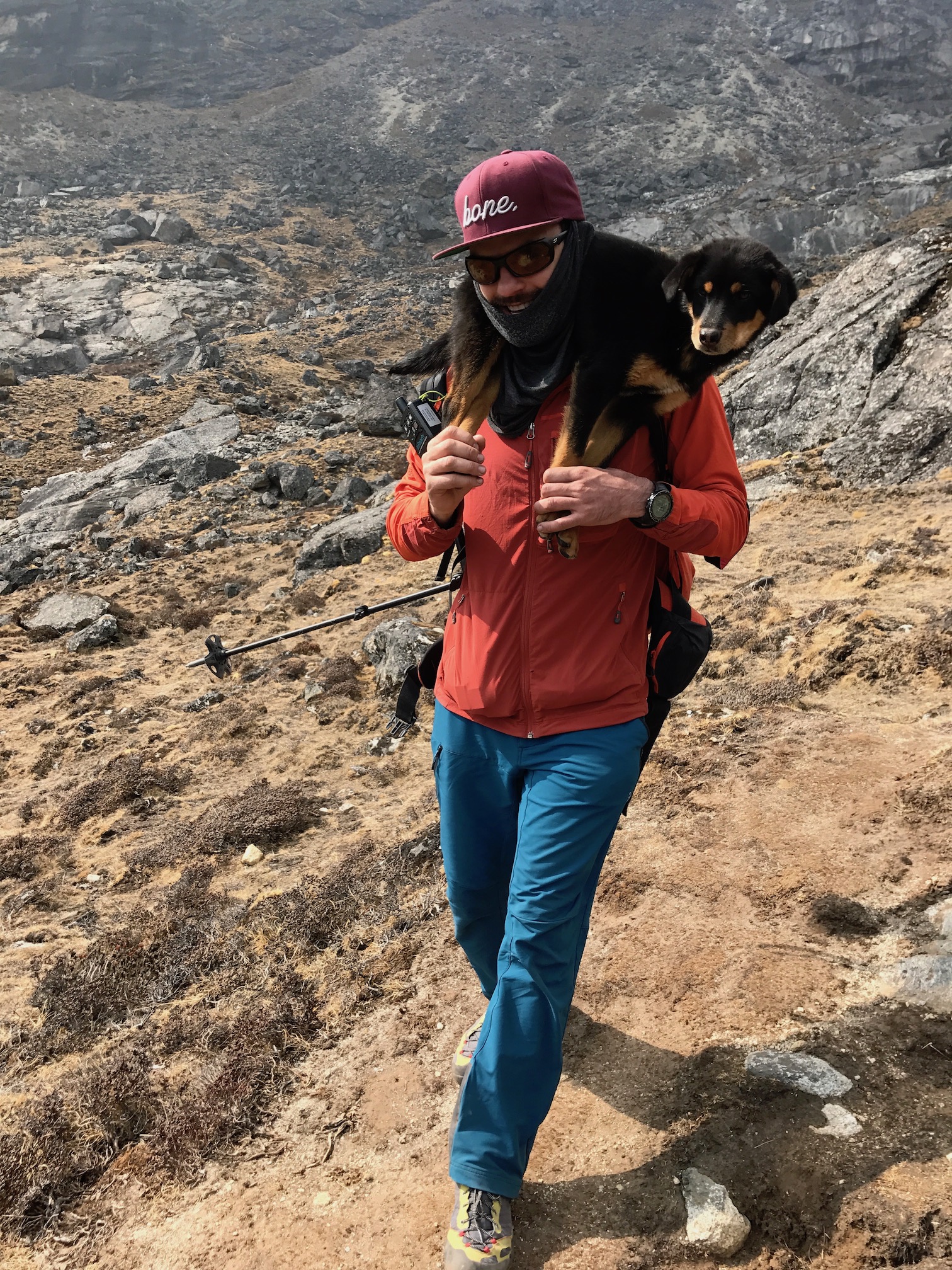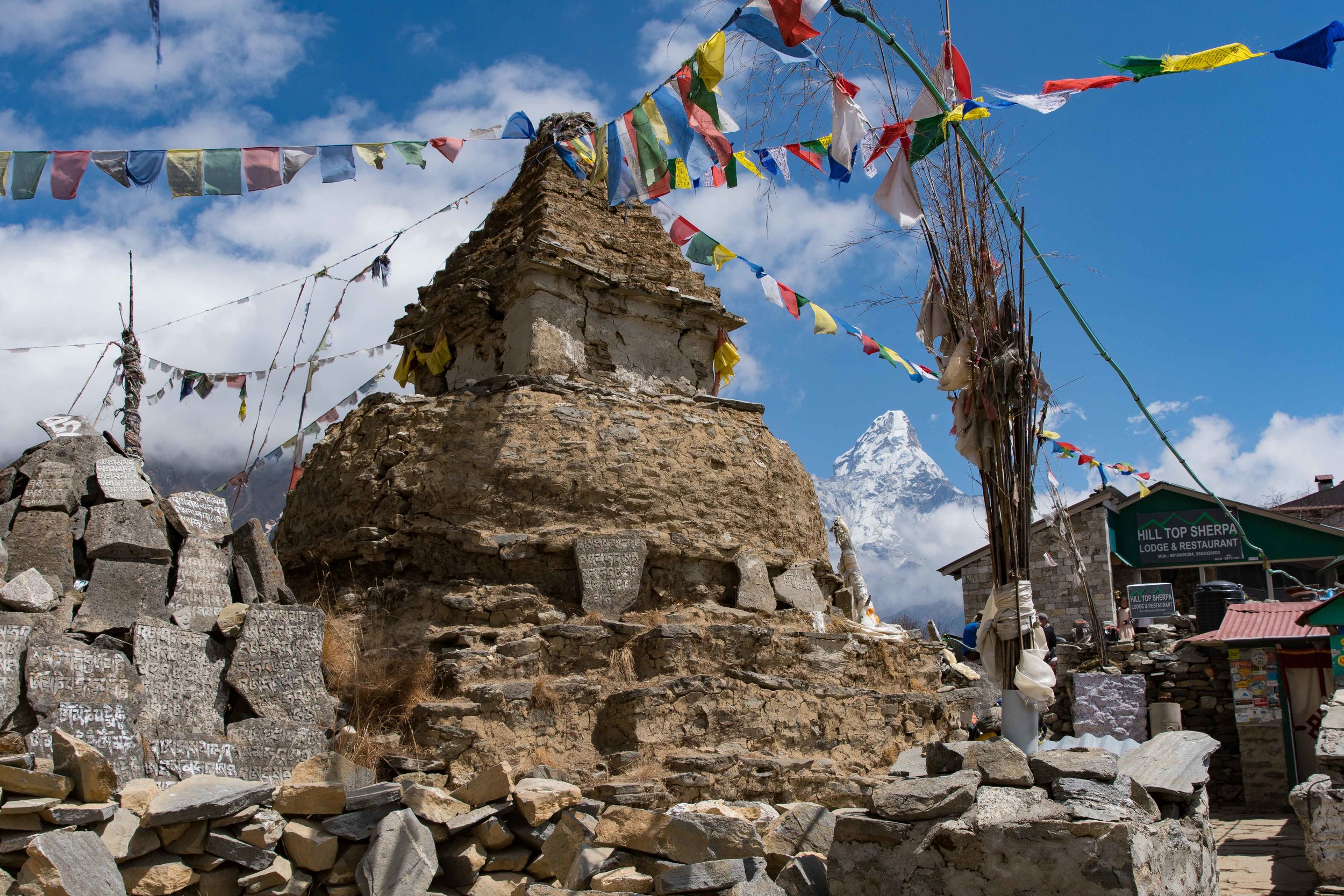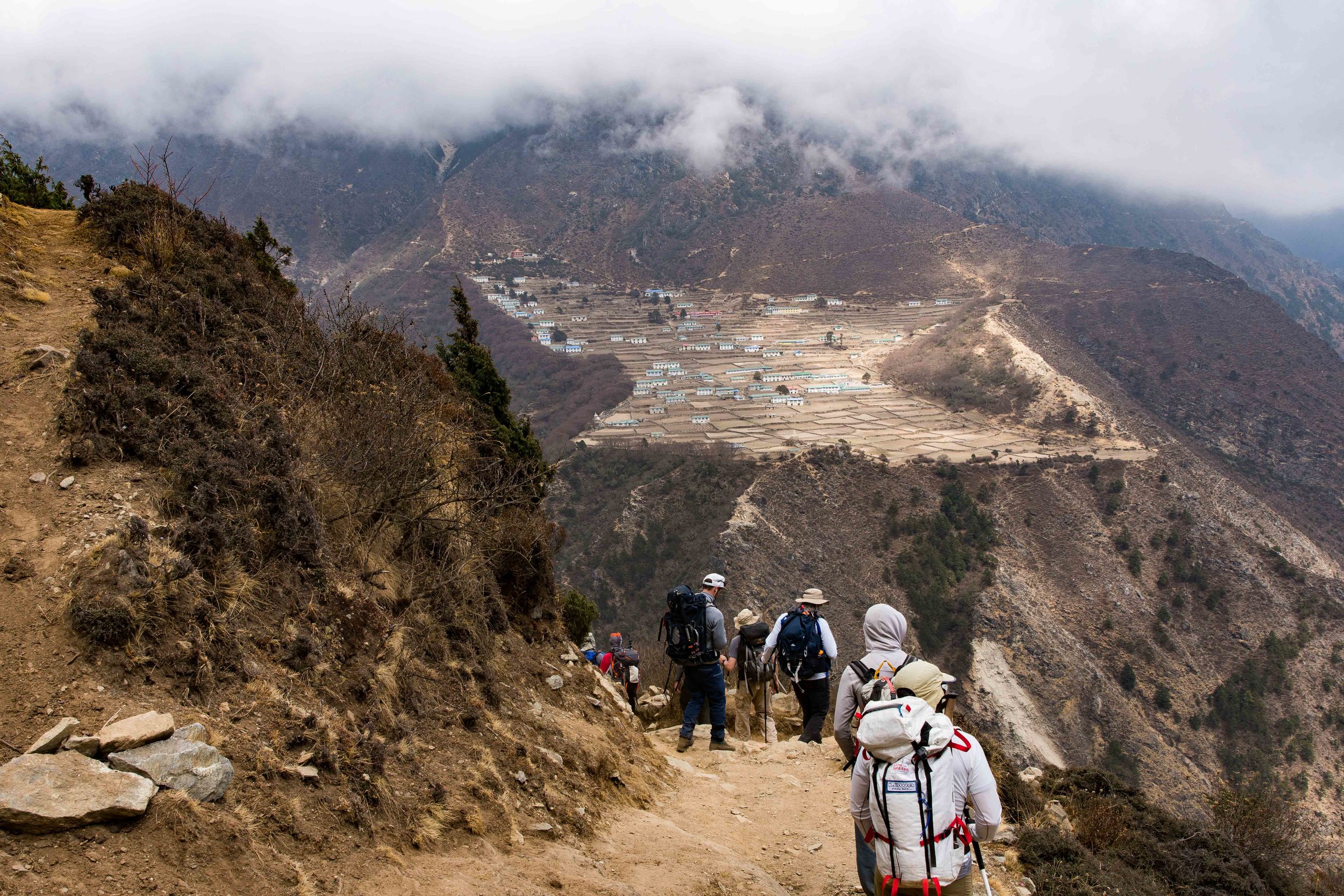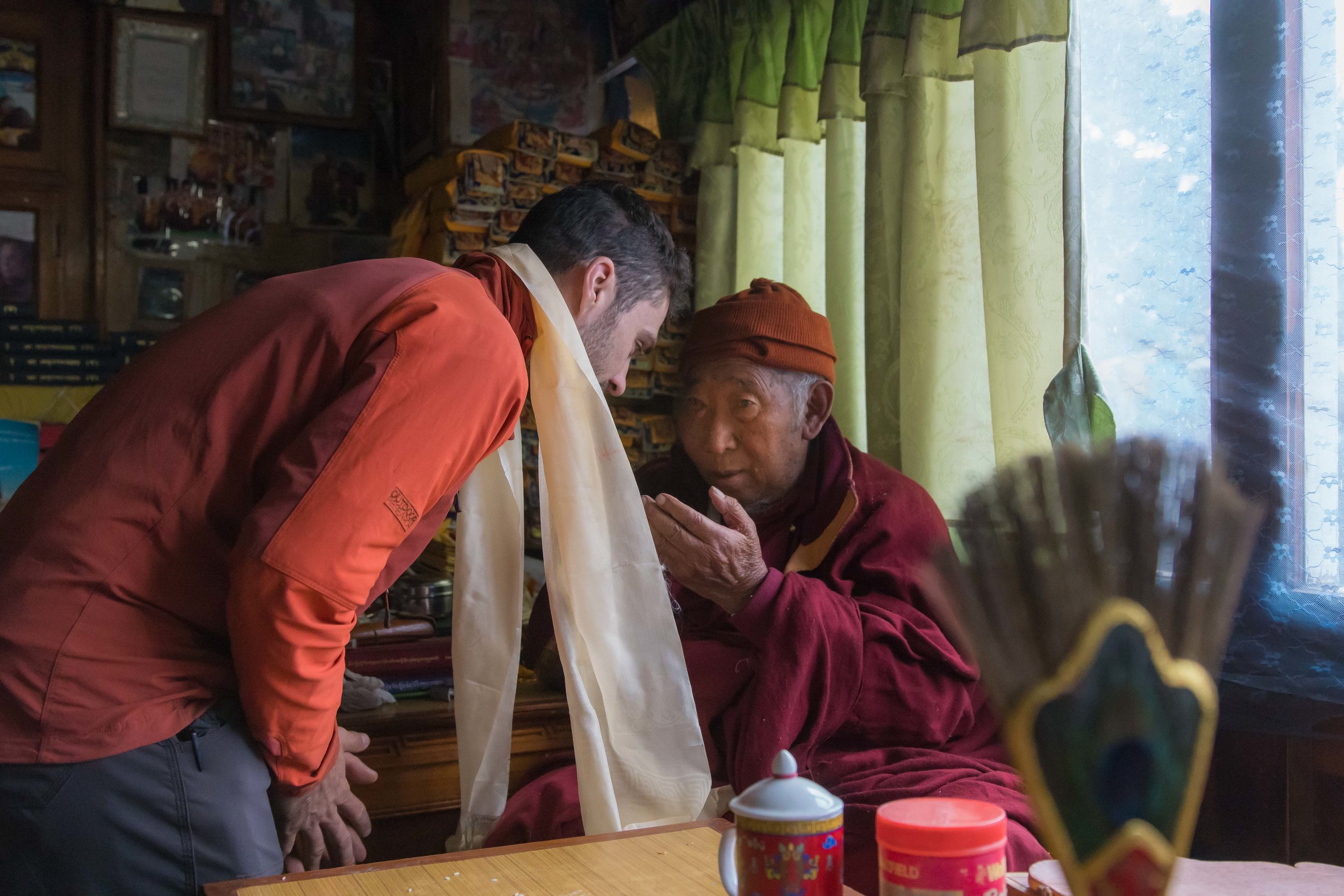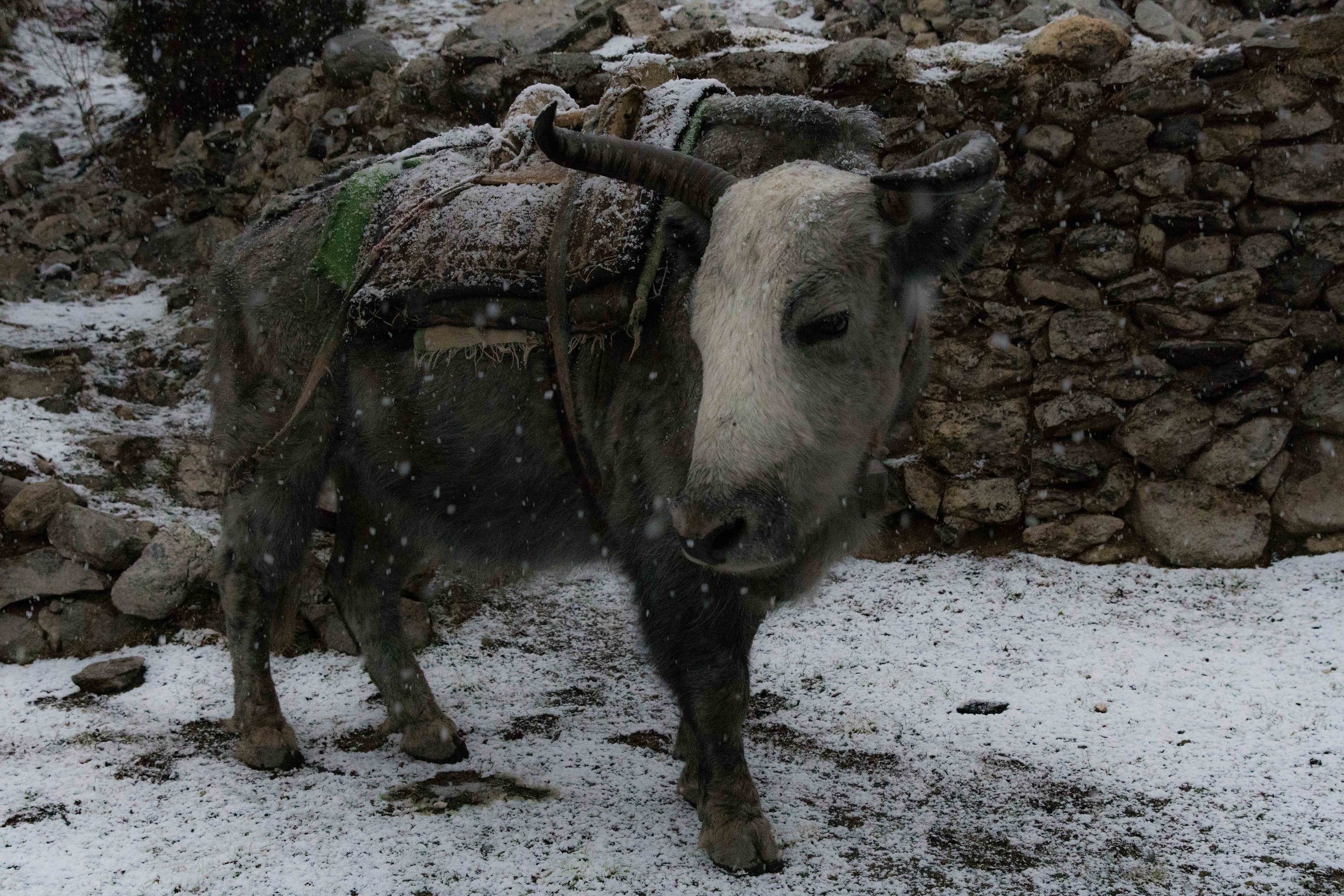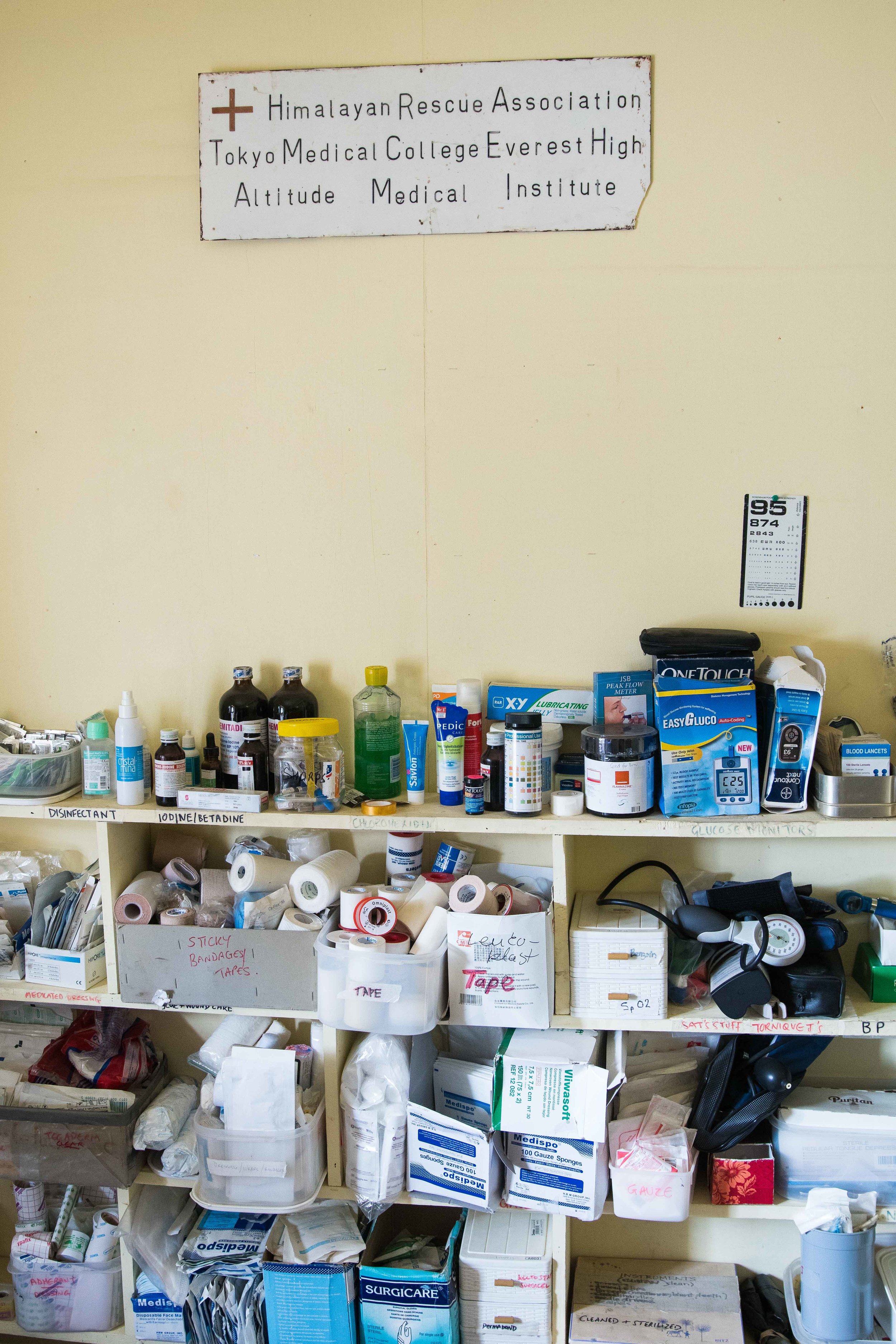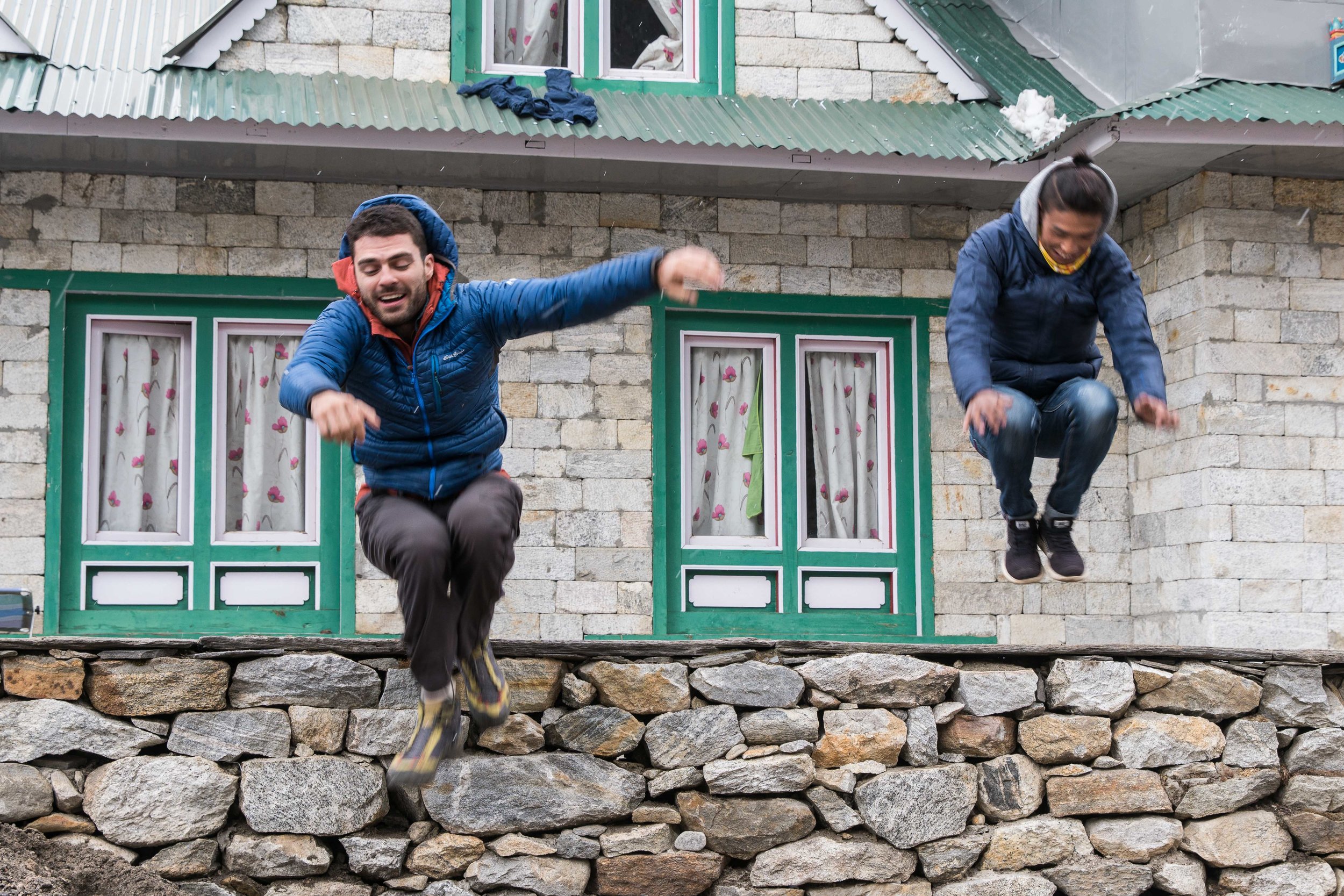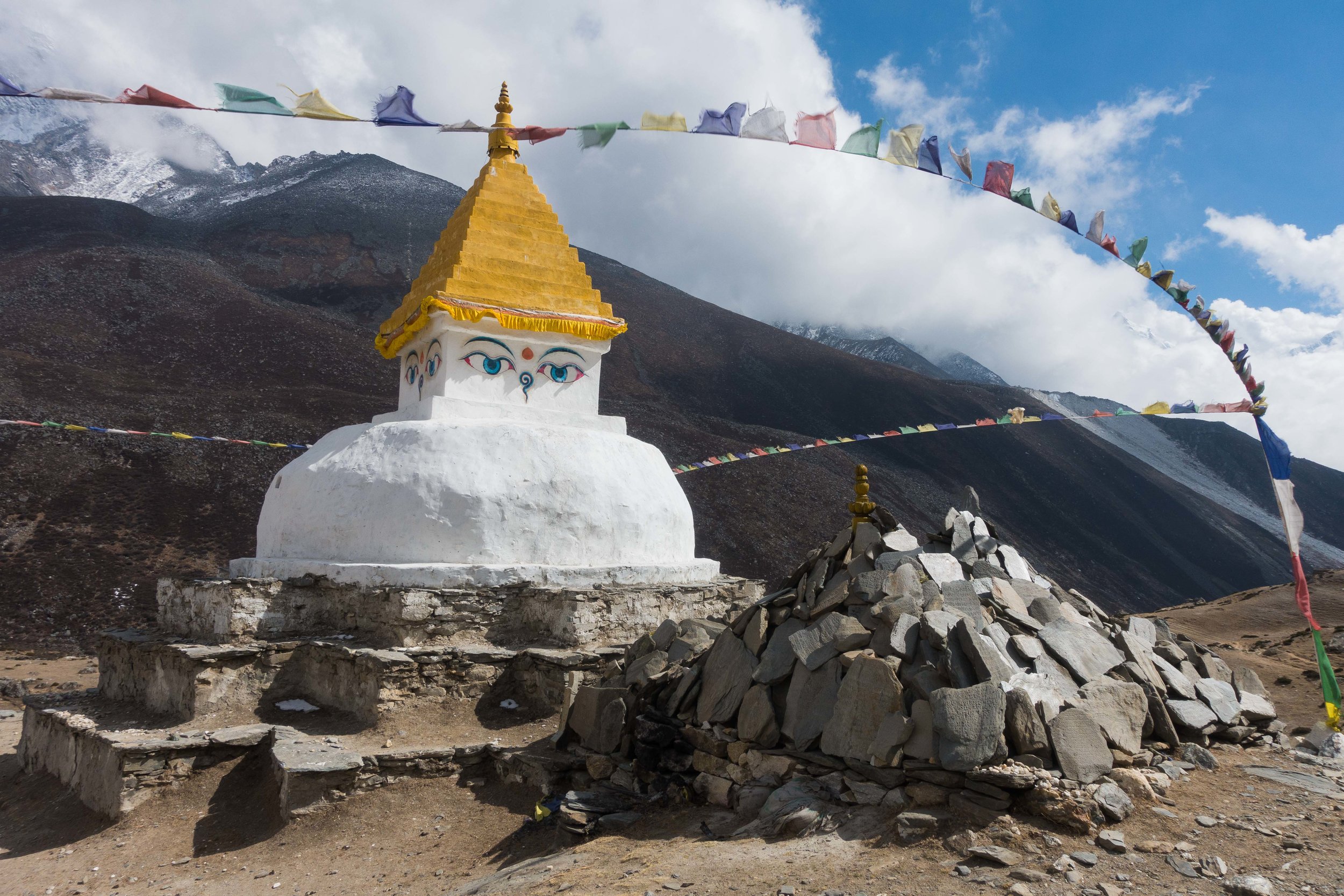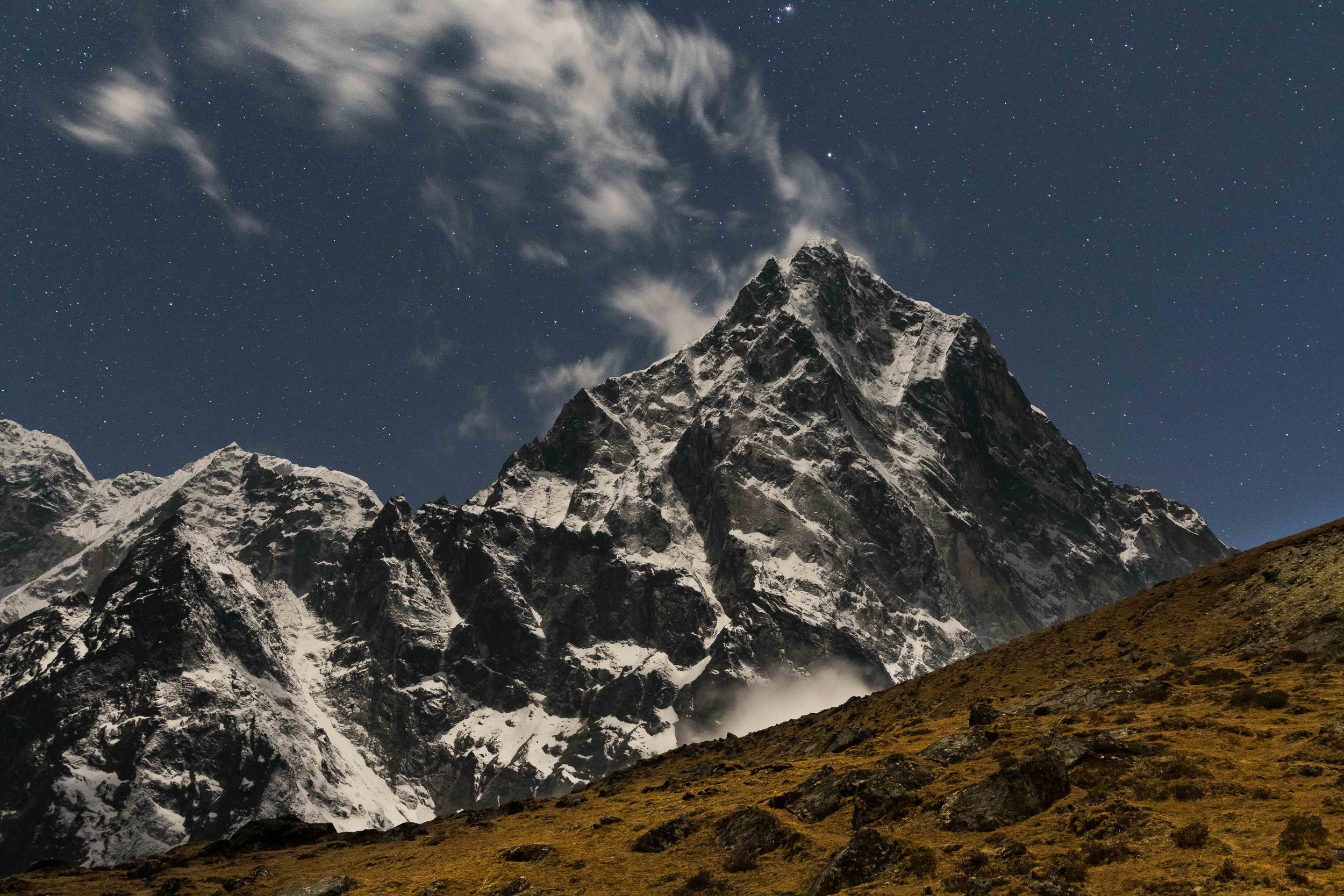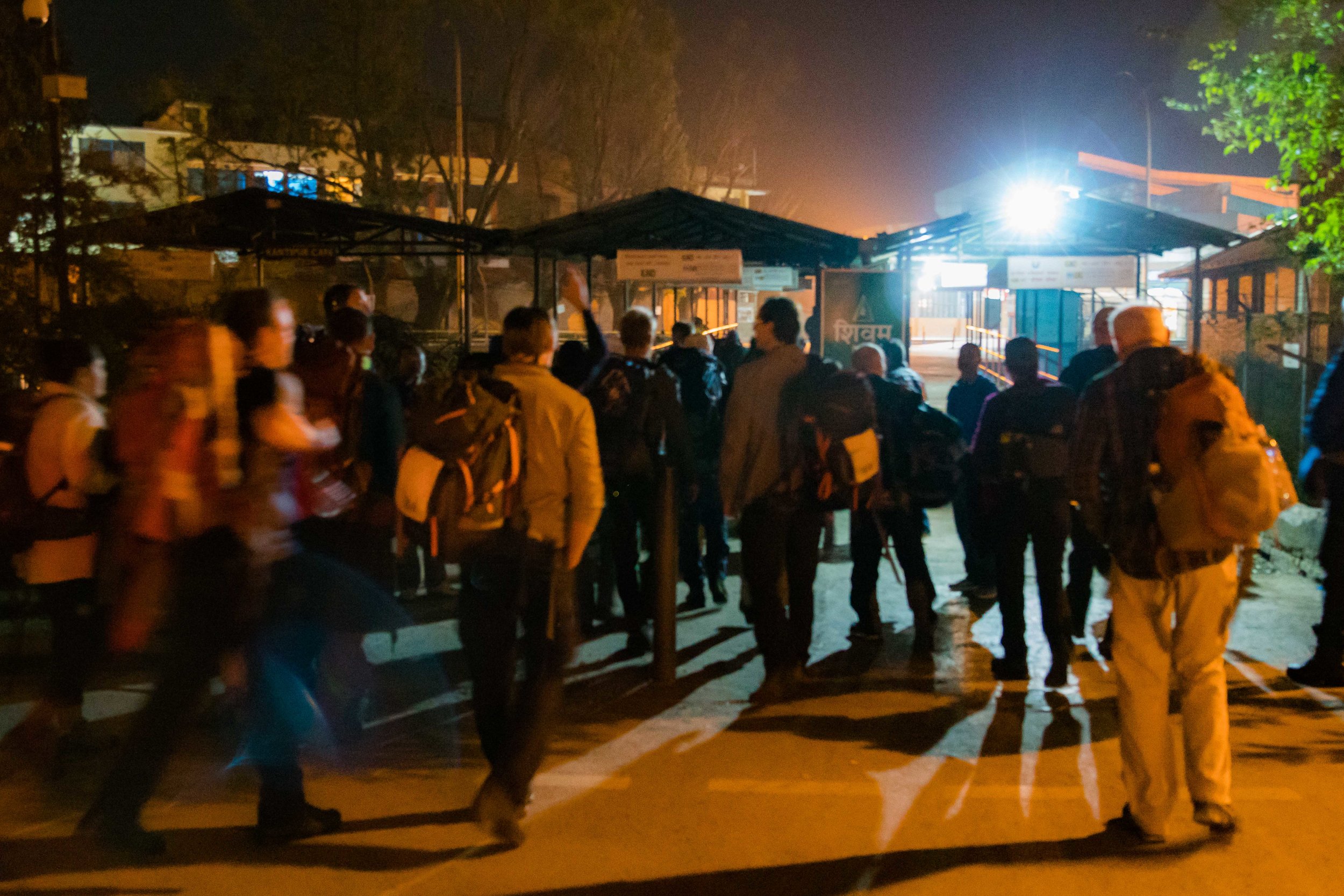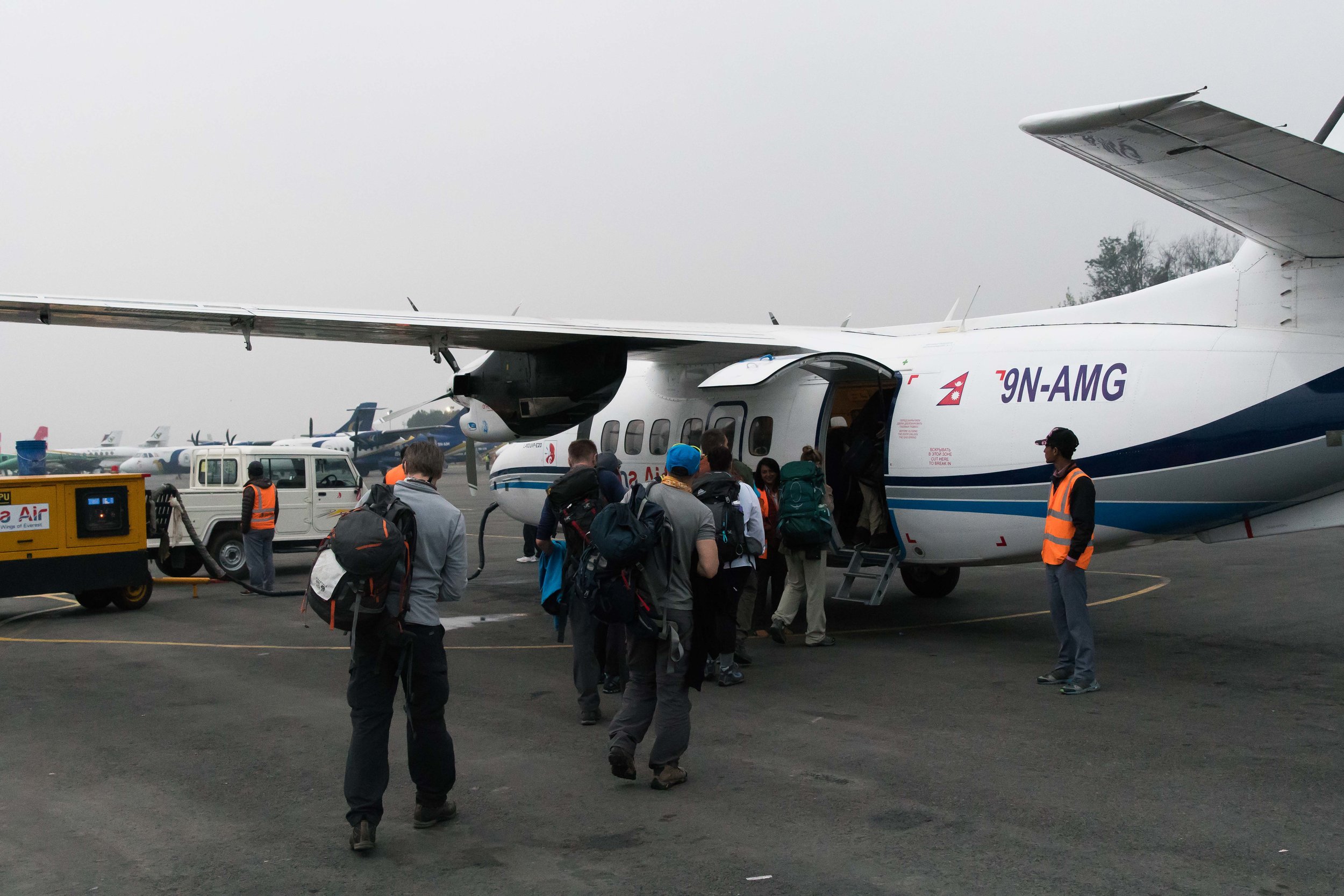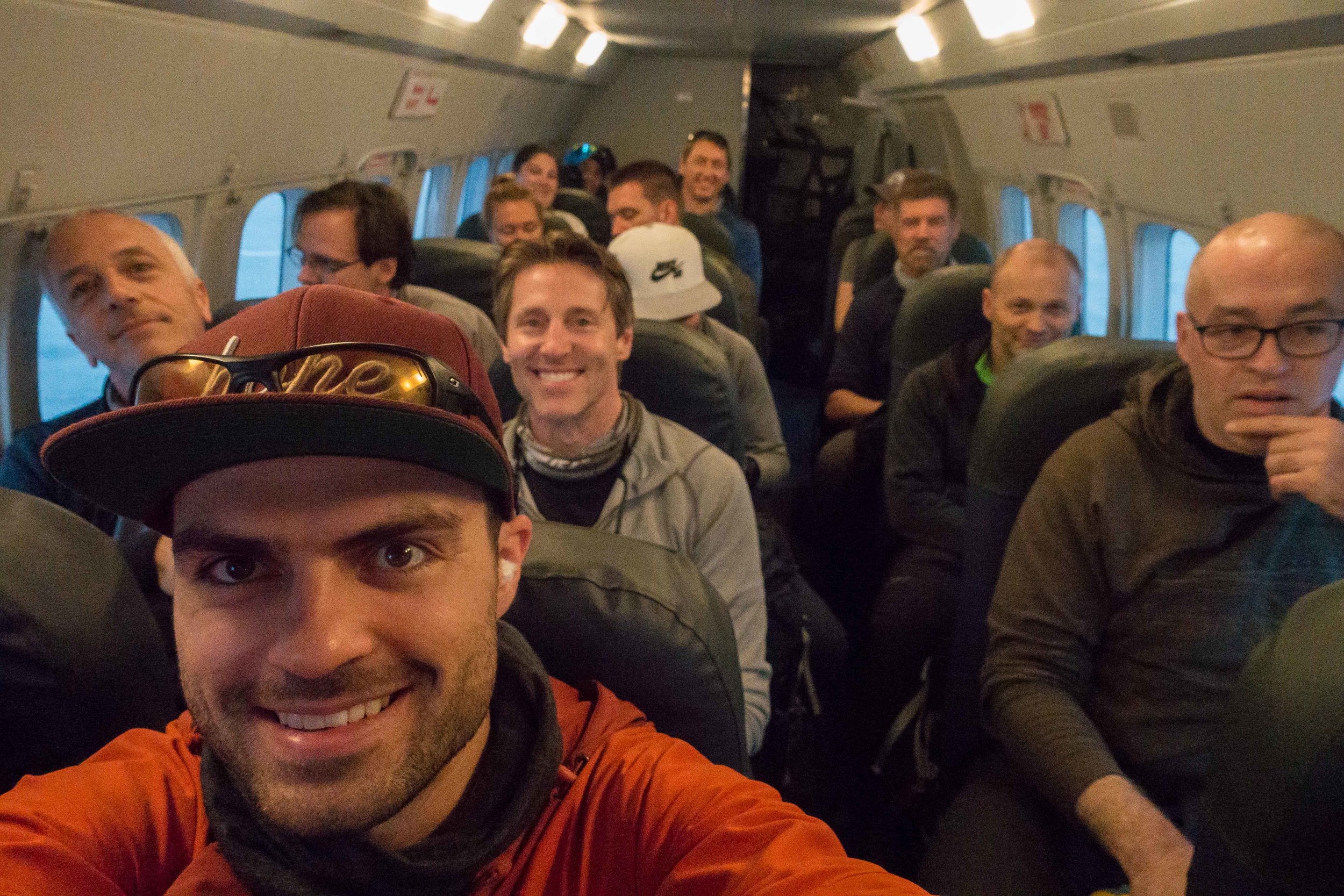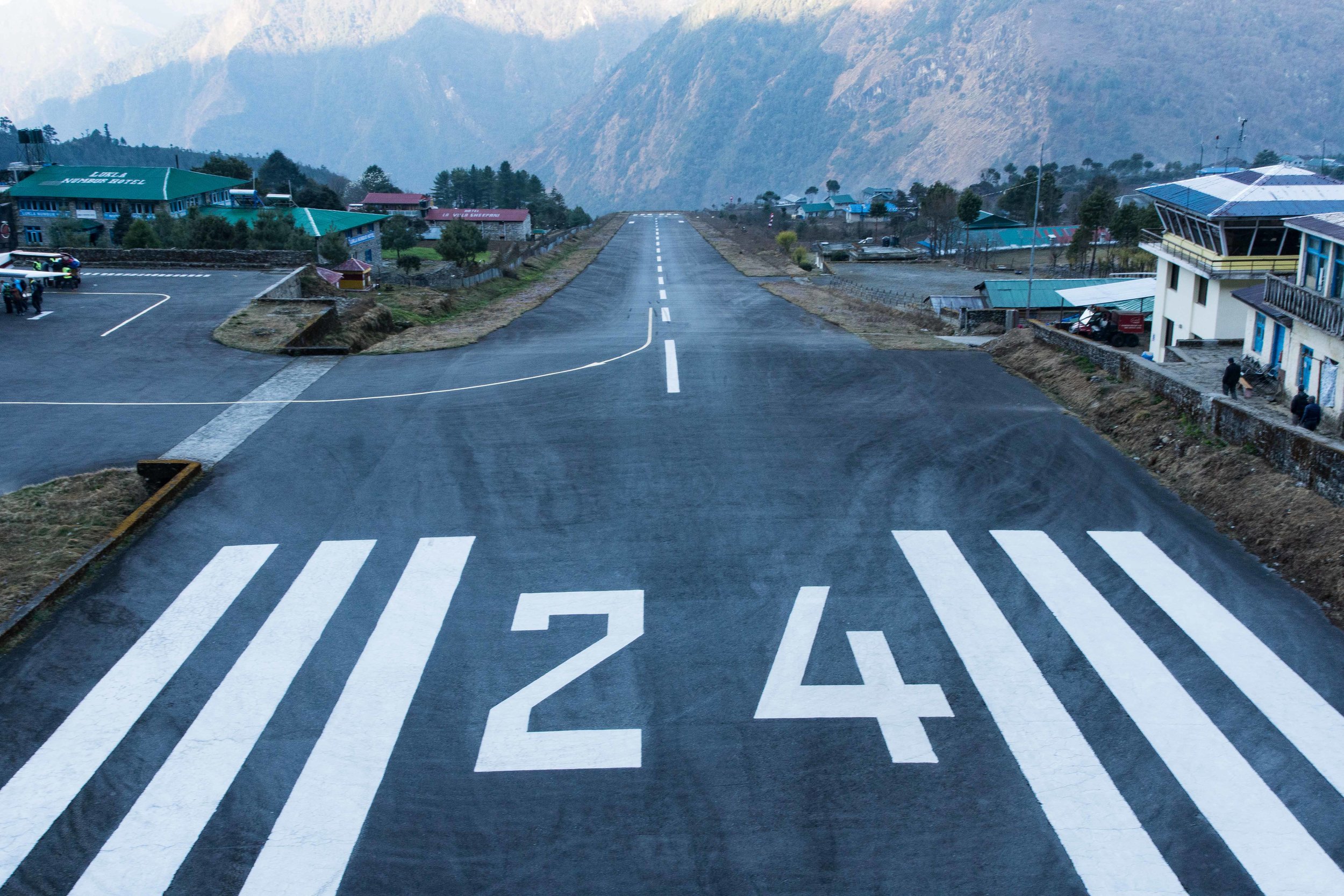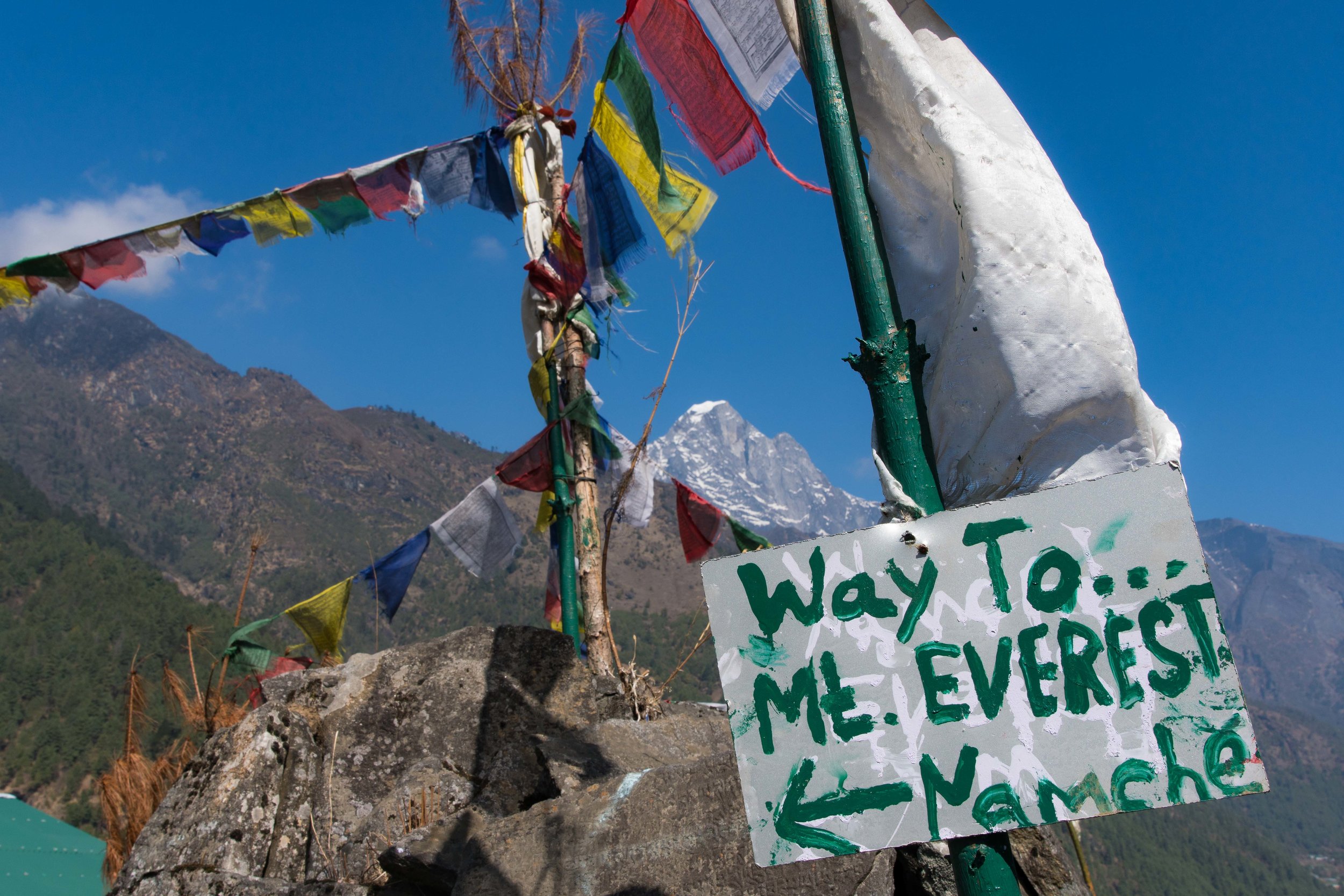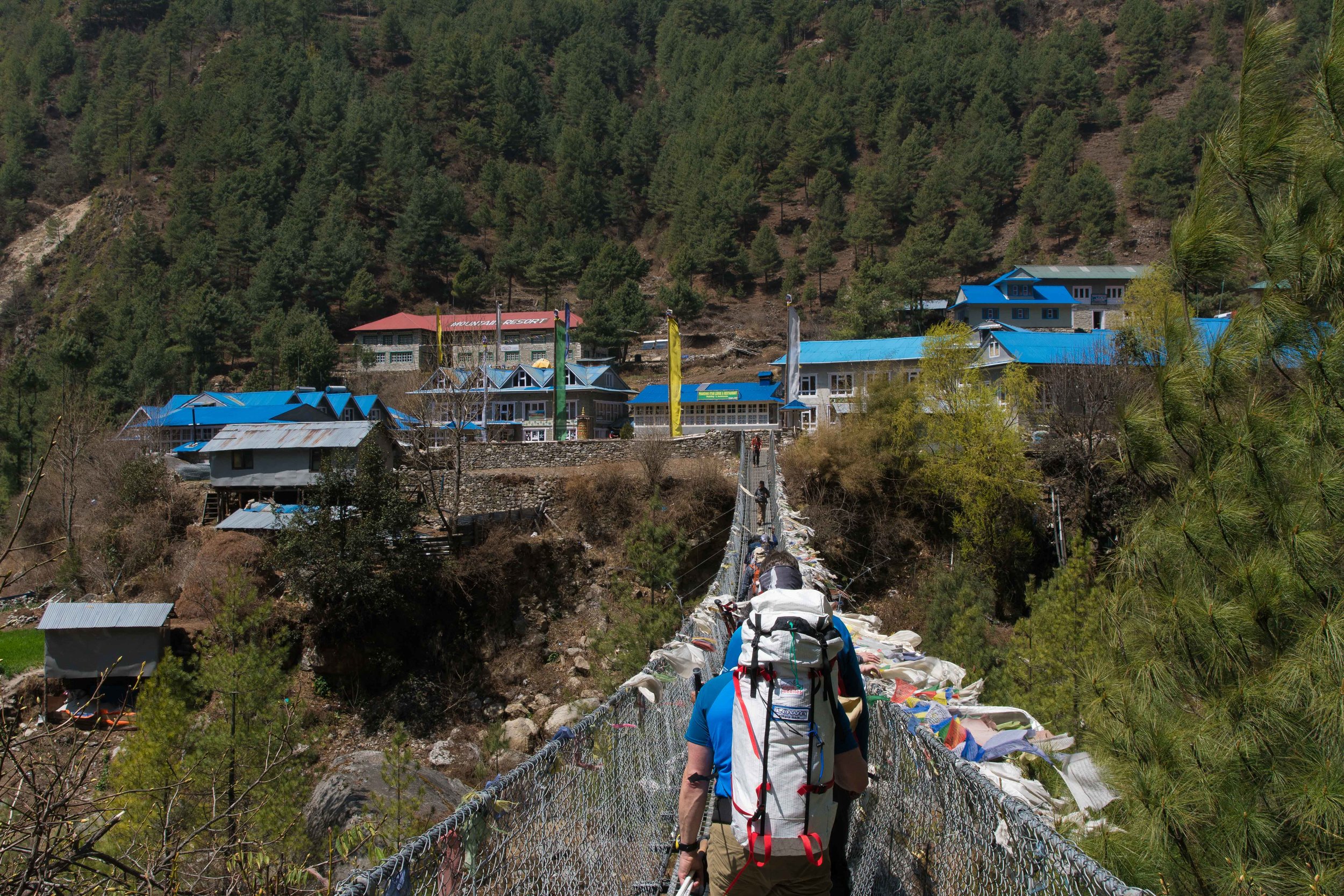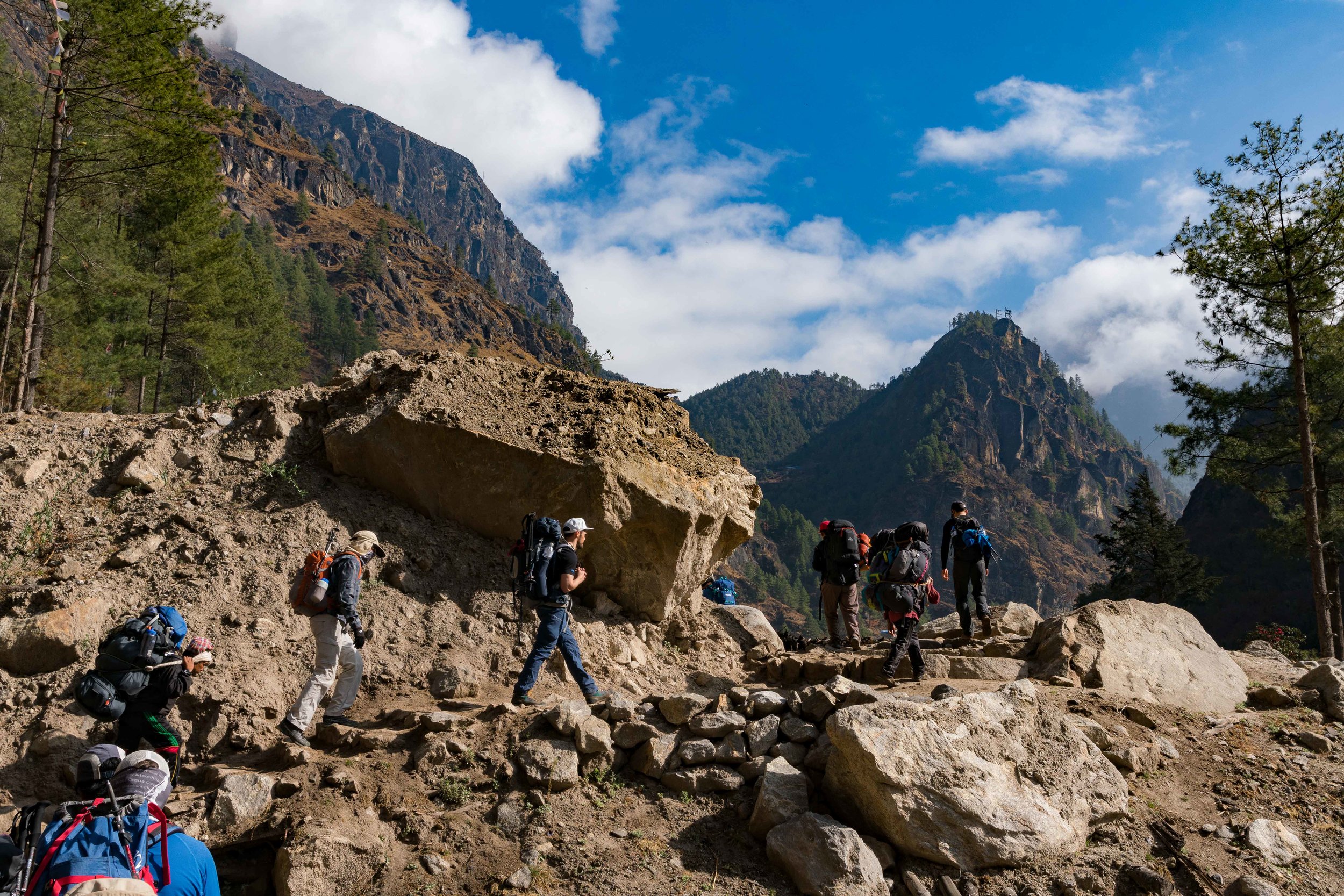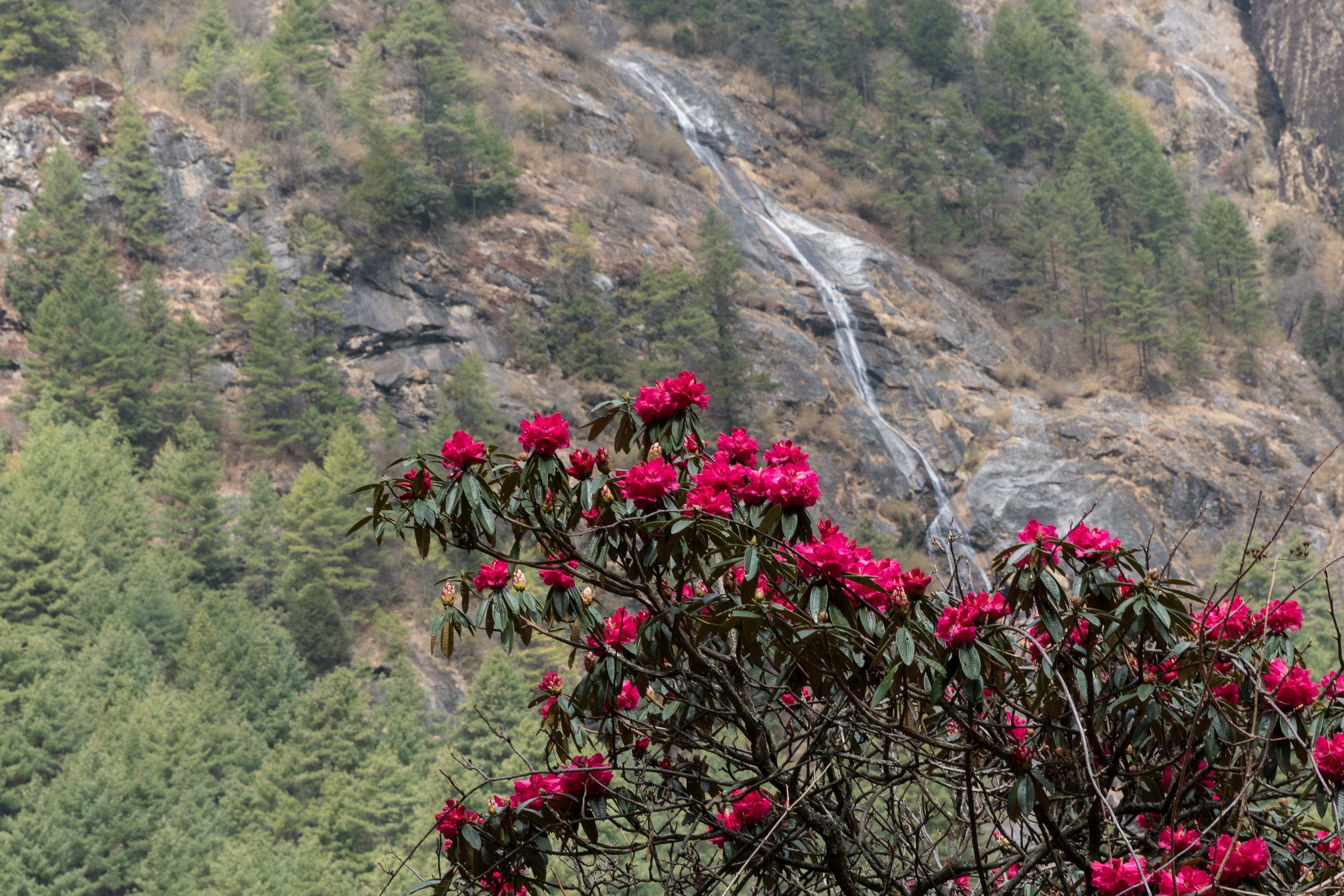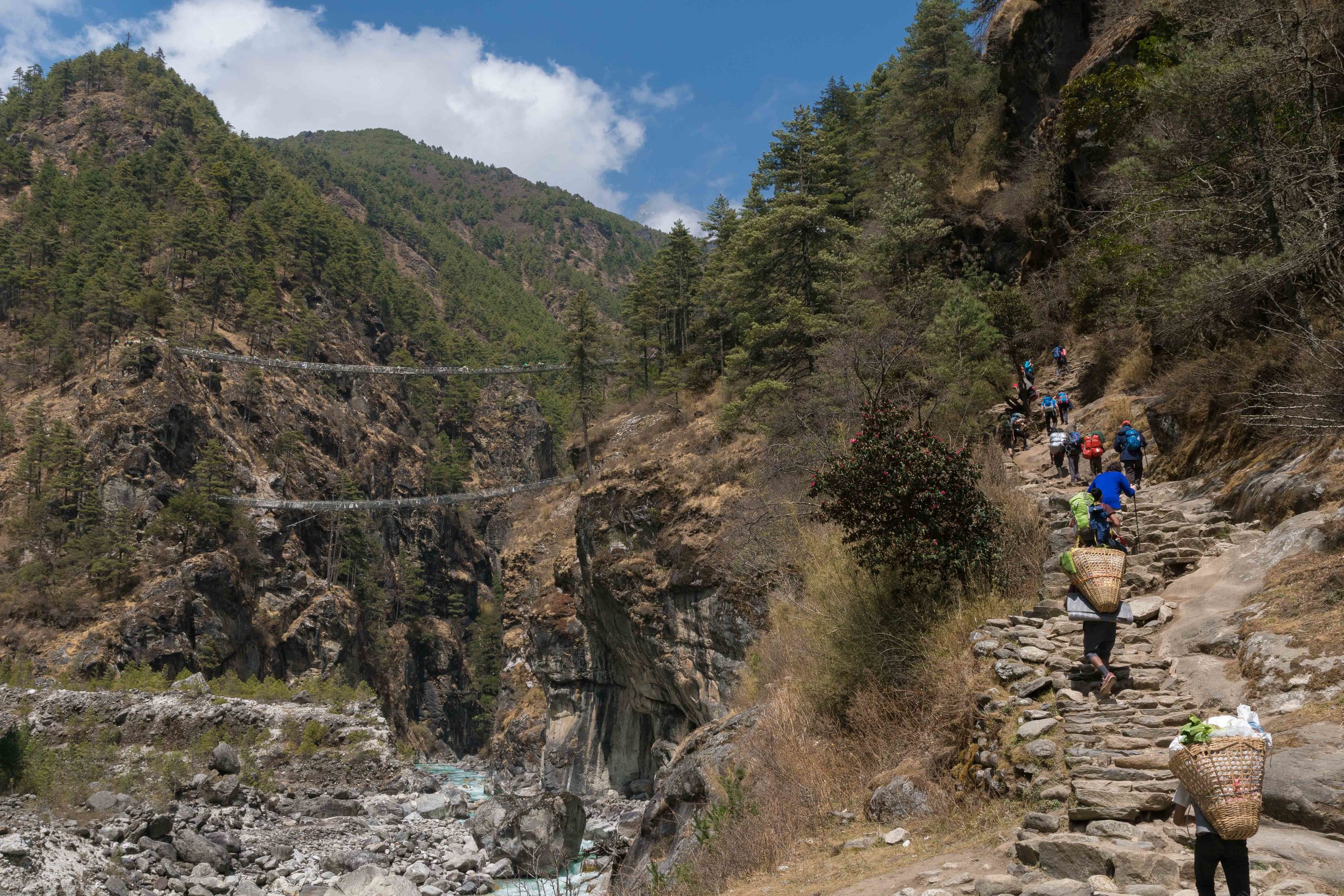International Mountain Guides (IMG) Everest Base Camp - 17,329 ft (5,283 m)
Ueli Steck died yesterday. He fell below the summit of Nuptse (25,791 ft; 7,863 m) during a training climb for his planned transit of the ridge connecting Sagarmāthā, Lhotse, and Nuptse via the once-climbed Hornbein Couloir. He was the best climber in the world, an idol for mountaineers worldwide, myself included. His courageous ascents of peaks in the Alps and Himalayas were at the pinnacle of the alpine arts, expanding the possibilities of the sport of mountaineering. He knew how to dream, and we are diminished without him. Please keep his wife and two children in your thoughts.
Ueli Steck climbing above the bergschrund on Sagarmāthā's South Face - 23 April 2017
My trip through the Lower Popcorn Field of the Khumbu Ice Fall on my first rotation. You can hear me praying in Tibetan under my breath.
The first time I saw the Khumbu Ice Fall, I looked right past it in my search for the route to the Western Cwm - “cwm” is a Welsh synonym for cirque, a rounded, glaciated valley. The jumble of ice passes underneath hanging glaciers and crumbling rock precipices on Nuptse and the West Shoulder of Sagarmāthā. The terrain seems impenetrable. It is exactly what a mountaineer wisely avoids for fear of being crushed by an ice or rock fall, suffocated in an avalanche, or swallowed by a crevasse. I realized that this maze of seracs and crevasses was our gateway to the top of the world only after orienting myself by Pumo Ri and Lingtren, the two mountains that sourced the avalanche that killed seventeen climbers in the 2015 earthquake. As I absorbed this discovery, my mind was silenced and I steeled my resolve. Three round trips through the Ice Fall is all I would need to complete the expedition.
Sagarmāthā kills: Since the dawn of commercial expeditions in the early ‘90s, on average seven climbers have perished per year, setting the fatality rate at 1.2% (source: The Himalayan Database). Aside from the summit ridge above the South Col, the Ice Fall (17,500 ft to 19,500 ft; 5,340 m to 5,950 m) is the deadliest section of the mountain, and it is certainly the most worrisome because objective hazard - the uncontrollable risk presented by the terrain - is the source of most incidents. Most mountaineering routes, no matter how dangerous, appeal to me because they are problems to solve. Pre-expedition research, route finding during the climb, and the placement of protection for the rope team erode the risk until it reaches a threshold of palatability. The Ice Fall is immune to such careful preparation and execution. The area is simply a minefield, with each transit being a multi-hour game of Russian roulette. Here your only defense is speed; since you can’t mitigate the risk by other means, you simply reduce your exposure to danger by moving more efficiently. If you get unlucky, the ante is a cubic-meter block of ice, which weighs just over a ton (~1000 kg). While this is certainly enough to kill or maim, the route often takes you under curtains of ice 50’ to 100’ (15 m to 30 m) tall that are delicately perched in a mass of other debris from the Khumbu Glacier. Should those ice pillars fall, the results would be catastrophic. I spend my time in the Ice Fall moving at 75% of my maximum speed, increasing my pace to a full sprint during sketchy traverses under unstable serac walls. All the while I alternate between chanting Tibetan prayers - “Oh Mani Pad Me Hung Hri” - to bemoaning my current circumstance - “This is bullshit.”
Even facing such peril, my mind’s principal focus is not on the hazards that threaten me but on how to mitigate risk in order to stay alive. However, since we are all climbing for essentially selfish reasons, I don’t delude myself to believe that this or any ascent is an indicator of valor. Regardless, in his definition of courage Mark Twain captures the spirit of a mountaineer’s relationship with fear: “Courage is resistance to fear, mastery of fear, not absence of fear.” In the mountains, the absence of fear can be deadly. It suggests a lack of respect for the alpine terrain and its many dangers. It suggests a profound naivety. This is perhaps characterized by a puppy that followed us to the summit of Lobuche East (20,161 ft; 6,147 m) a few weeks ago. On our ascent, she clambered up smooth granite slabs and hopped between sun scallops in the upper snow slopes, but upon reaching the summit she promptly passed out either due to hypoxia or exhaustion. Here she would have died if a Canadian climber hadn’t carried her down to high camp in a jury-rigged satchel. I helped her complete her descent to base camp after we discovered a cold injury on her rear paw. That night she rewarded our efforts by waking the entire camp to warm us of an invasion of yaks, a benign occurrence. (Who would have known that yaks are the Nepalese version of a vacuum cleaner?) I shooed away the yaks and then open bivouacked next to her to prevent additional disturbances, reflecting on what would compel a puppy to confront an animal ten times her size. Here a lack of knowledge induced a lack of fear, both of the mountain and of the yaks, which could have killed this dog. She was a dog, so her ignorance is forgivable, but humans should know better, and yet unfounded audacity frequently kills people in the mountains.
Our expedition was blessed by a puja on 9 April 2017. Prayers, chang, and San Miguel beer consecrated our climb.
This puts into focus the taxonomy of fear. The first type is emotional fear, which paralyzes the ability to engage with the source of concern. This is self-defeating, joint-seizing terror. It cripples and consumes. The second type is rational fear, which manifests itself as a low-grade worry. This draws your attention to the task at hand, so you can identify and address the sources of your unease. It is self-attenuating, motivates innovation, and abolishes self-imposed boundaries. Alpinists savor this second type of fear, a fear that keeps us alive in the mountains.
Yaks roam the sand pit in Gorak Shep. Kala Patthar (18,530 ft; 5,649 m) rises just behind them with Chumbu (22,503 ft; 6,861 m) in the background.
That I am inclined towards the salutary, low-grade unease instead of outright terror is no accident. My training as an engineer taught me how to confront seemingly intractable problems, breaking them into progressively smaller units until finally progress can be made. Since then I have rarely felt overwhelmed by any dilemma, no matter how complicated or critical, whether programming an algorithm or attempting to safely climb a route. My experience as a pilot has extended this rational distillation to potentially life threatening situations that only I can eliminate. In the air, if an engine dies or there is an electrical fire in the cockpit, the pilot runs the emergency checklists until the problem is resolved. Of course, there is a possibility that the pilot’s best efforts are insufficient to maintain flight and the plane crashes, called an “off airport landing” in the cool-headed lingo of aviators, but even in this case you are attempting to mitigate the problem, i.e., the risk and concomitant distress, until you run out of altitude. There is no time to indulge in the emotional blizzard of fear. In his interview on Death, Sex, & Money, Dr. Jonathan Clark describes a plane crash he experienced with his wife Dr. Laurel Clark before her fatal ride on STS-107 on the Space Shuttle Columbia: “You’re working the problem, you’re working the problem, and then it ends. You crash, and either you live or you die” (source: “An Astronaut’s Husband, Left Behind"). Examples of this abound in mountaineering literature; notably Joe Simpson kept working the problem as he descended the Andean peak Silua Grande (20,813 ft; 6,344 m) with a broken leg, and for his efforts he lived, an ordeal which is chronicled in the book and movie Touching the Void.
For me, extreme care and rationality combat the risk and fear that permeate climbing, and at the core of this battle is love. My cousin Noël sent me off to Nepal with a card that invokes the Greek myth of Merops, a bird that rose to the heavens flying backwards so its eyes were always fixed on home. Every step from base camp takes me closer to the summit and into greater danger, and I feel heavier as my mind is filled with thoughts of family and friends and my heart is filled with their well-wishes and worries. In his memoir An Astronaut’s Guide to Life on Earth, Canadian astronaut Col. Chris Hadfield reflects on the stunning lack of melancholy that accompanied his final departure from the International Space Station: “Earth is home to everyone I love.” Nearly everyone I love isn’t on this mountain. Those few exceptions are my fellow expedition members. While our fraternity has been forged by the trials of the mountain, our relationships are not dependent on an alpine setting. We will all be glad to leave here in good health. We will all be glad to see our family and friends again. I’m trying to summit for me; I’m trying to come back home for everyone else.
This shouldn’t suggest that climbing is an entirely sober endeavor. Waking up at Camp II at the base of the 8,000 ft (2,500 m) South Face of Sagarmāthā induces a childlike joy. I have been tempted to run out of my tent in the middle of the night whooping and hollering after contemplating the nearly 100 year history of climbing on Sagarmāthā and my small part in it. The Cwm is a magical place. We head back up there tonight. Wish us luck.








